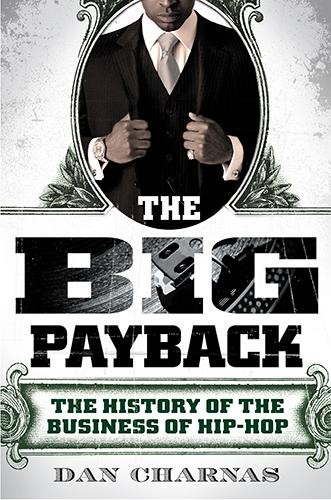Sales of hip-hop music have dropped in recent years and pop music has re-asserted its dominance of the Billboard charts. You could argue many reasons for this decline: illegal downloads, the closing of music stores across the U.S., the rise of “”Glee”” and its reliance on pop songs, etc.
Even some veteran artists like Sean Combs and Jay-Z realize that making strictly hip-hop music can no longer be a major part of their business plan, let alone their creative output. Yet, looking at hip-hop’s history, this shift in priorities is nothing new.
Early in the “”The Big Payback: The History of the Business of Hip-Hop,”” Dan Charnas recounts how many of the first hip-hop acts were not only paying attention to the lyrics they wrote and the beats they borrowed, but also to the clothes they wore and the stage performances they put on.
In “”The Big Payback,”” Charnas charts hip-hop’s rise not only as a musical force but also as a lifestyle that is packaged, marketed and sold around the world. It’s no accident that hip-hop artists have expanded their sources of income and media exposure to include movies, clothing lines, colognes and perfumes, and even becoming an in-house band for a late-night TV show.
Charnas’s exhaustive research for “”The Big Payback”” pays off repeatedly and results in an insider’s look at how hip-hop rose out of the backlash toward disco to become a global music and business. In anecdote after anecdote, Charnas shows how the major players, from the DJs and MCs, to the concert promoters and record label executives, all fought for their piece of the action.
Charting the history of hip-hop as a music industry is a formidable task, but Charnas handles it with concision and an insider’s knowledge. (Charnas worked as a talent scout and promoter, and was one of the first journalists writing for The Source magazine, a publication vital in presenting hip-hop as a legitimate music and culture.)
However, even with more than 600 pages of fascinating history, Charnas doesn’t mention the backlash to the mainstreaming of hip-hop and the rise of underground or “”backpack”” hip-hop. But given the epic scope of “”The Big Payback,”” this is a minor complaint for a topic that merits its own book.
“”The Big Payback”” serves as a vital companion to Jeff Chang’s “”Can’t Stop Won’t Stop: A History of the Hip-Hop Generation.”” Whereas Chang’s seminal book examined hip-hop as a cultural force, Charnas takes a detailed look at what helped hip-hop take its prominence in popular culture not only in the U.S., but throughout the world. For anyone even remotely interested in hip-hop, “”The Big Payback”” is vital reading.









